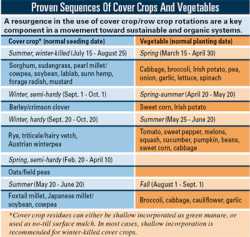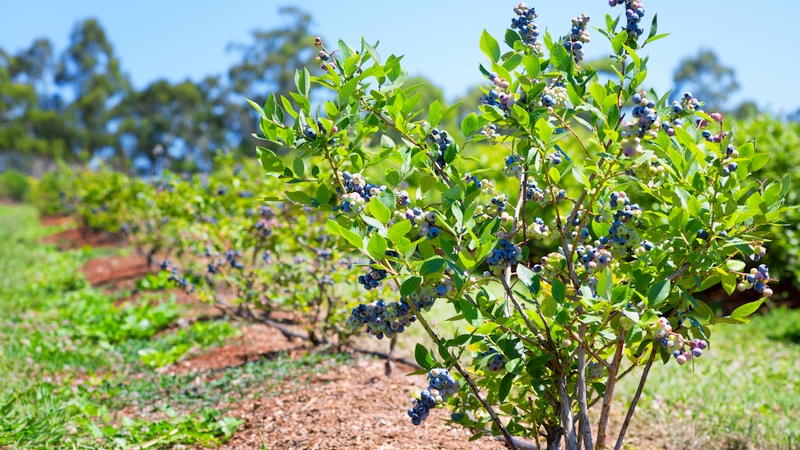Vegetable Rotation Makes “Cents”

Sustainable agricultural systems strive to minimize off-farm inputs and maximize productivity (crop yield) and profitability using on-farm resources. Keeping the soil covered with diverse rotations of high-biomass cover crops and row crops can simultaneously increase short-term productivity (P), as well as long-term production capacity (PC). Achieving and maintaining an effective P/PC balance is essential for sustainable systems.
Historically, animal manures and legume cover crops (green manure) were incorporated as fertilizers for production of row crops such as vegetables. Use of crop rotations declined dramatically after World War II, in favor of monocultures and use of chemical fertilizers, herbicides, and other crop protectants. In recent years, however, there has been a resurgence in the use of cover crop/row crop rotations as the key component in the worldwide movement toward sustainable and organic systems.
Normally, production of row crops involves extensive use of heavy farm equipment for land preparation, cultivation, and harvest. These practices often result in the degradation of soil quality. If row crops are produced year after year — without rotating with soil-building crops — the level of soil organic matter can decline significantly, resulting in reduced yield (P) and soil quality (PC).
Conversely, well-designed cover crop/row crop rotations keep the soil covered with organic residues that stabilize or even enhance crop yield and soil quality. Integrating intensive crop rotations and reduced tillage systems is particularly effective in stabilizing and improving crop yield and soil quality.
Making Adjustments
There are several principles of crop rotations for vegetables to keep in mind.
1. Divide available farm land into workable field plots. Ideally, whenever possible, vegetables should not be grown in field plots having severe renovation needs. Instead, a soil-building crop such as perennial sods should be grown. Using “fallow” crops can accelerate improvements in soil quality and weed management. Fallow herein refers to an extended period of one or more years when vegetables are not grown and the soil is kept covered with living soil-building cover crops.
2. Grow high-biomass cover crops at least once per year in field plots used for vegetable production.
Ideally, whenever possible, fallow one-half of the field plots annually, using biennial sods, or a sequence of annual cover crops and/or grain crops.
3. Rotate spring with summer-fall vegetables, and winter, spring, and summer cover crops. Maximize species diversity by rotating different families of vegetables and biocultures of grass-legume cover crops.
4. Use “natural” (compatible) cover crop-vegetable sequences. Many cover crops are known to make ideal companions for vegetables (see Proven Sequences Of Cover Crops And Vegetables).









